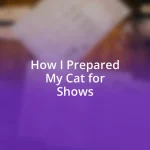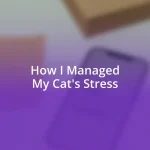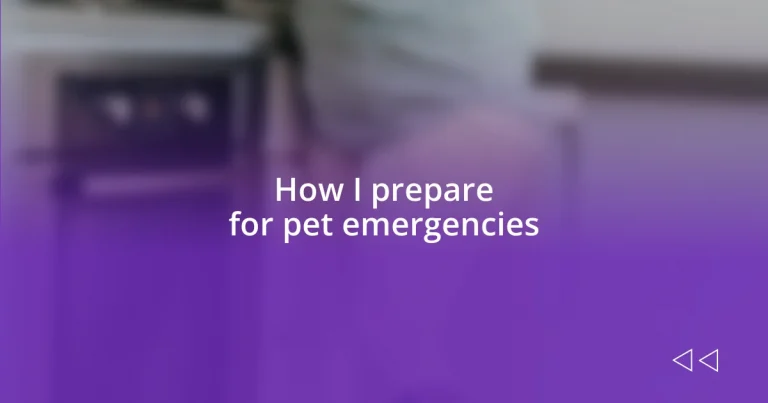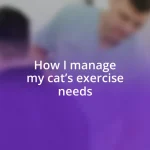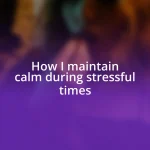Key takeaways:
- Understanding pet emergencies involves recognizing subtle signs of distress and being mentally prepared to act swiftly.
- Creating an emergency plan includes hazard assessment, established communication protocols, and regular rehearsals to ensure effective response.
- Maintaining a well-stocked pet emergency kit and organized health records is crucial for ensuring timely care during emergencies.
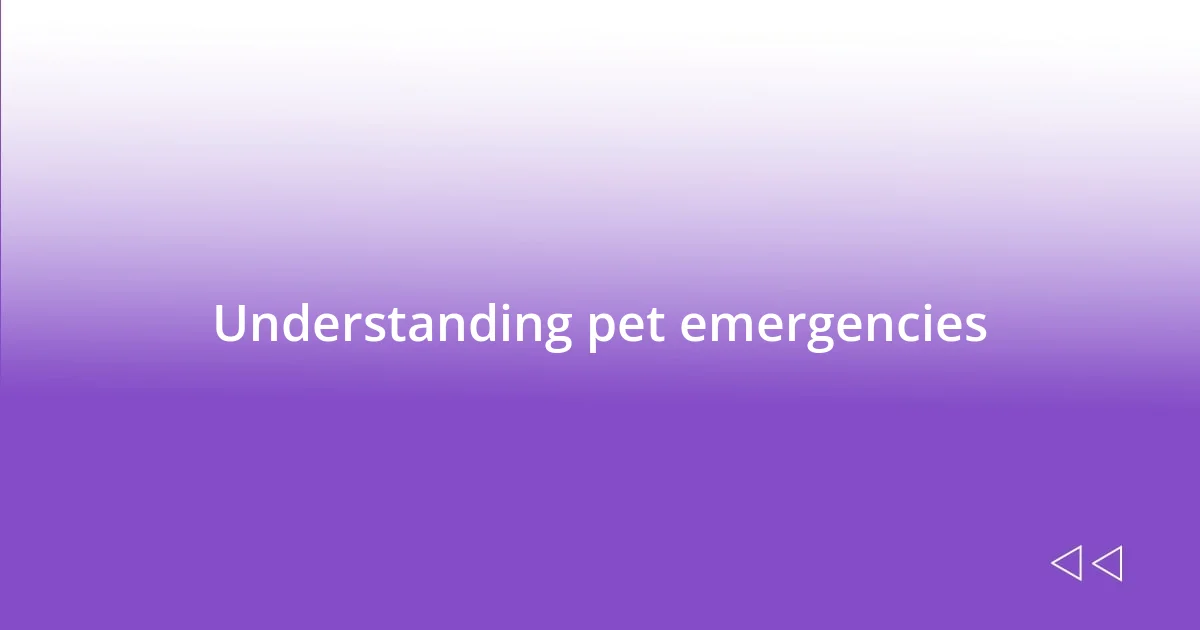
Understanding pet emergencies
Understanding pet emergencies requires a keen awareness of situations that can rapidly escalate into serious health issues. For instance, I once faced a frightening moment when my dog swallowed a foreign object during a play session. It was terrifying to think about the possible consequences, and it made me realize how essential it is to recognize the signs of distress in our furry friends.
Every pet owner should consider what constitutes an emergency. Is it just visible trauma, or could subtle changes in behavior signal something more serious? I remember when my cat suddenly stopped eating and seemed lethargic. Initially, I brushed it off—until a friend reminded me that cats can be great at masking pain. This taught me that understanding pet emergencies goes beyond the obvious; it requires looking closely and trusting your instincts.
What I’ve learned from my experiences is that preparedness can make all the difference in an emergency. Do you have a plan in place? When I started keeping a checklist of signs to watch for and resources, like the nearest vet and emergency animal clinic, I felt more equipped to handle any situation. It’s not just about having supplies; it’s about being mentally prepared to act swiftly when the unexpected strikes.
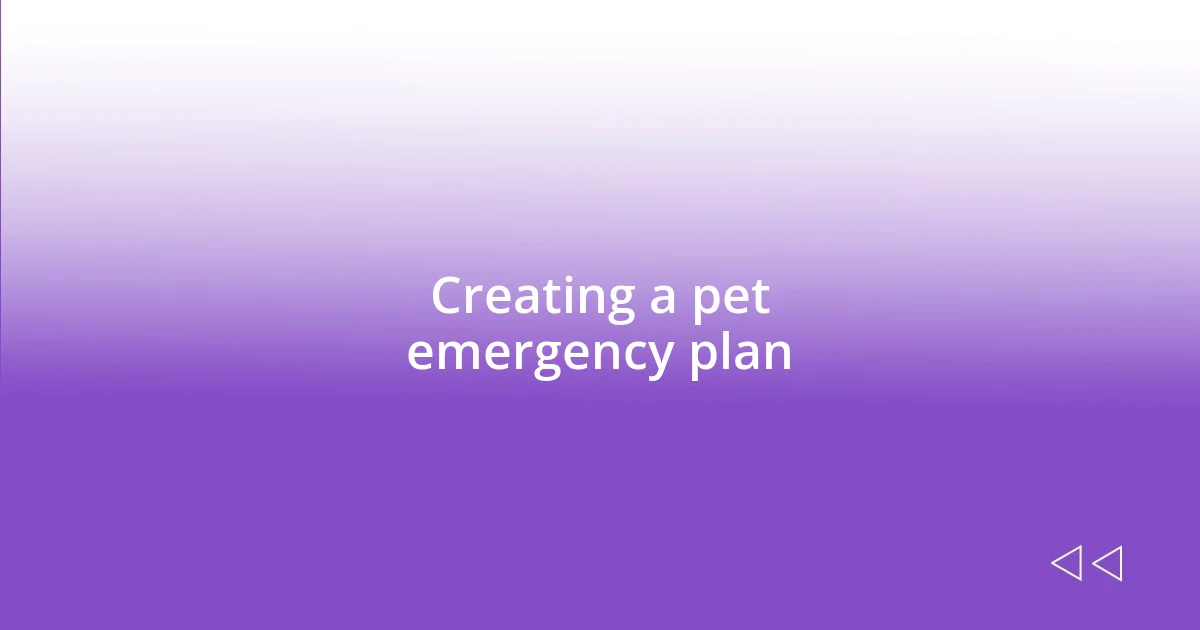
Creating a pet emergency plan
Creating a pet emergency plan starts with a thorough assessment of your unique situation. One aspect I always consider is identifying potential hazards in and around my home. Last summer, while setting up my backyard for a barbecue, I realized that certain plants were toxic to my pets. It was a wake-up call that highlighted the importance of knowing what could potentially harm my furry companions.
Next, I recommend establishing a communication protocol with your family or housemates. When my dog had an unexpected allergic reaction, it was chaotic—everyone had different ideas about what to do. After that experience, I decided to create a simple checklist and designated roles for each person. This ensures everyone knows who to call or what to do in case of an emergency. It’s about creating a sense of calm and direction when things can feel overwhelming.
Lastly, never underestimate the power of rehearsal. I have a friend who practiced their emergency plan, and you know what? It really paid off! During a recent incident, when one of their cats got into a scuffle, they jumped into action without hesitation. This level of preparedness not only saves crucial time but also builds confidence that you can manage the unexpected. It’s about being ready together as a pet-owning team.
| Emergency Plan Element | Description |
|---|---|
| Hazard Assessment | Identify potential risks around the home and yard that could endanger your pets. |
| Communication Protocol | Establish a plan that outlines who does what in an emergency. |
| Rehearsal | Practice your emergency plan so everyone knows their role, building confidence and response time. |

Gathering essential pet supplies
Gathering essential pet supplies is a critical step in my emergency preparedness routine. I distinctly remember the day I realized I had overlooked a few necessities during a minor incident with my cat. With a scratch that needed care, I found myself scrambling for basic items. That moment highlighted how crucial it is to have a well-stocked pet emergency kit, ensuring I don’t face a frantic last-minute search when every second counts.
Here’s a list of supplies I make sure to have on hand:
– First-aid kit (bandages, antiseptic wipes, adhesive tape)
– Pet medications (including any prescriptions)
– Food and water (enough for at least three days)
– Leash and harness
– Muzzle (for safety, even if your pet is friendly)
– Copies of important documents (vaccination records, microchip info)
– Comfort items (favorite toys or blankets to soothe pets in stress)
Having these supplies ready not only provides peace of mind but also reinforces the love I have for my animals. I’ve learned that preparation is an important part of responsible pet ownership.

Establishing a pet health record
Establishing a pet health record may seem straightforward, but I’ve realized how vital it is for ensuring timely and effective care during emergencies. I remember visiting the vet with my dog and frantically searching for his vaccination documents. Not having them readily available made me feel unprepared and stressed, reinforcing the importance of having all health information organized and easily accessible.
I recommend creating a dedicated folder for each pet that includes crucial documents, such as vaccination records, past medical history, and any ongoing treatment plans. One time, when my cat had an unexpected health crisis, the vet was able to quickly review her record, which allowed for a speedy diagnosis. Having that information at my fingertips not only saved time but also eased my worries, as I felt prepared to tackle the situation.
Don’t forget to regularly update this health record! I’ve learned the hard way that just because a document is saved doesn’t mean it’s current. Every time I take my pets to the vet, I make it a habit to update their health records immediately. How often do you review your pets’ medical health? Keeping it up to date is essential for their well-being and ensures you’re equipped to act swiftly in an emergency.
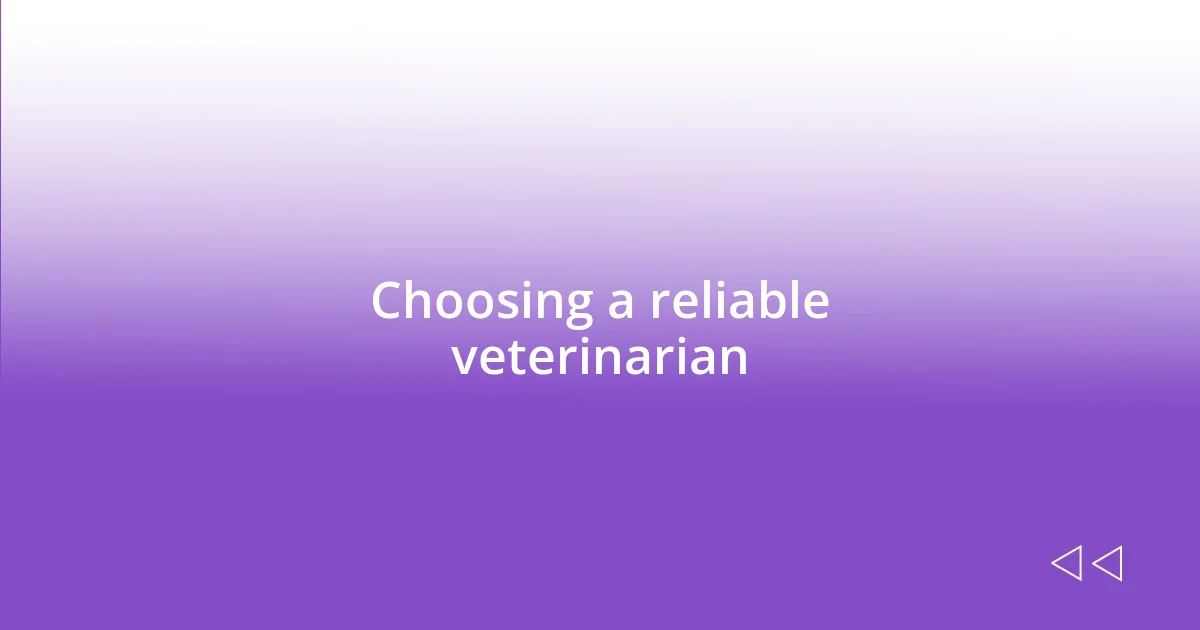
Choosing a reliable veterinarian
Choosing a reliable veterinarian is essential for your pet’s health and well-being. I’ve often found myself reflecting on how crucial it is to trust the person caring for my furry companion. For instance, when my cat needed emergency treatment, the vet’s calm demeanor and expertise eased my anxiety, making a stressful situation feel more manageable. I always look for a veterinarian who communicates openly and shows genuine compassion for animals.
On top of that, I recommend checking online reviews and asking local pet owners for recommendations. When I moved to a new city, I made it a point to visit a few veterinarians to see who I felt the most comfortable with. One clinic stood out because they took the time to answer all my questions and even offered a tour of their facilities. That hands-on experience reassured me about their professionalism and the care my pet would receive. Have you ever felt an instant connection with a veterinarian? It can make all the difference.
Lastly, I believe it’s important to consider location and operating hours. Emergencies don’t adhere to a schedule, and having a vet nearby can save precious time when your pet needs immediate attention. One time, I had to rush my dog to a clinic late at night after he accidentally swallowed something he shouldn’t have. Luckily, I had chosen a practice that was not only open but also equipped for emergencies. Trusting your veterinarian means you can act quickly and confidently when it matters most.
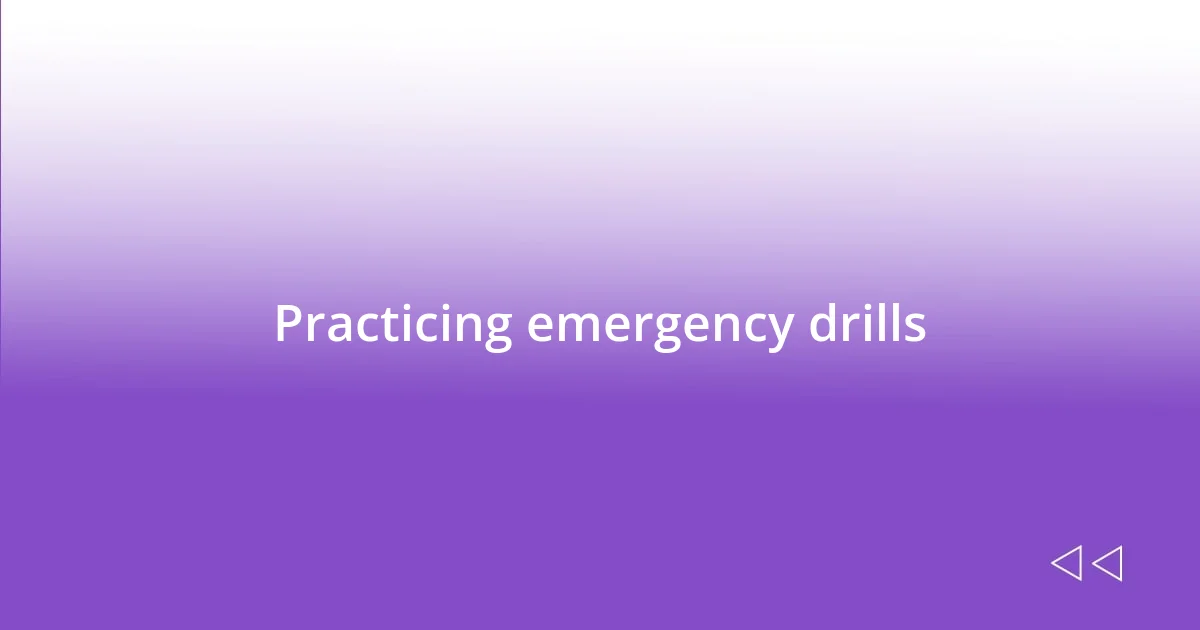
Practicing emergency drills
Practicing emergency drills has been a game changer for me and my pets. A few months ago, I decided to hold a fire drill at home. I remember the looks on my cats’ faces as I called their names and walked them through the escape route. It reinforced the idea that pets, just like us, need to be familiar with emergency procedures to reduce anxiety and confusion when it counts.
When I practiced these drills, I noticed something interesting: my dogs were more anxious during the unexpected loud noises than during the actual process of leaving the house. It made me realize that replicating stressful situations in a controlled environment can help them understand what to expect. Have you ever thought about how your pet reacts in a chaotic situation? I’ve learned that regularly simulating emergencies can help desensitize them to fear and promote calmness.
One approach that worked well for me was incorporating treats into the drills. By rewarding my pets after completing the drill, they began to associate these practices with positive experiences. Last week, during a sudden storm, my dogs seemed oddly at ease because we had practiced going into our safe spot together. Do you think a little preparation could transform your pet’s response in an emergency? Trust me, it makes all the difference to see them respond without panic when the unexpected happens.




